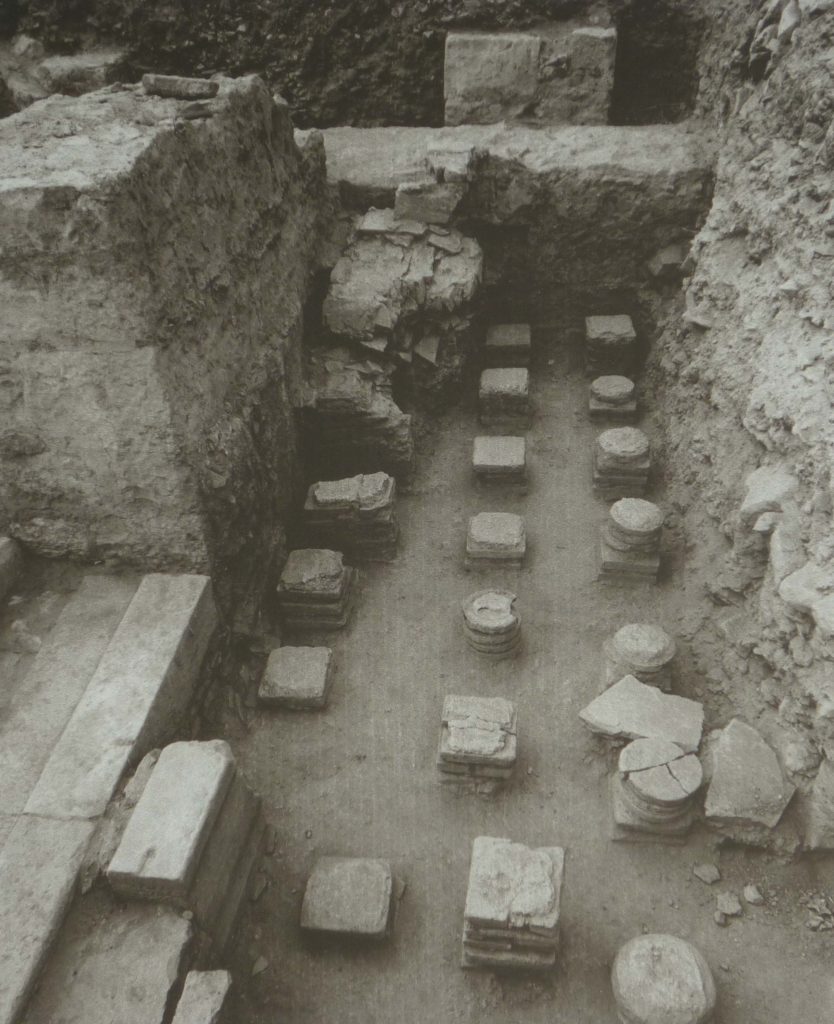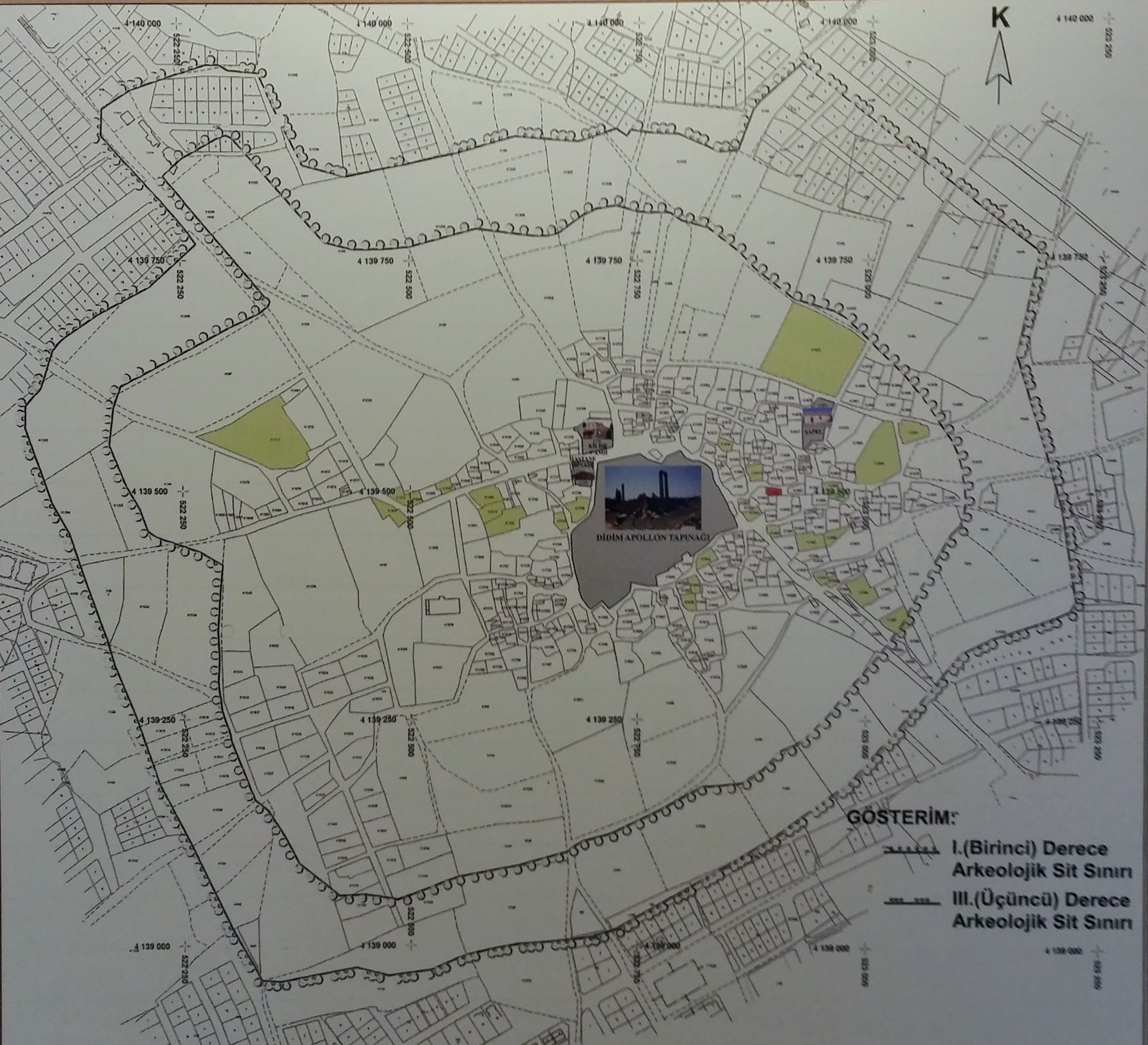By Glenn Maffia
Let us begin by awarding some credit to Didim’s Deputy Mayor, Emine Öznur Gündoğdu, for attempting to field some extremely pertinent questions from my colleagues at ‘Voices’.
The synopsis of the interview certainly raised issues which would be of relevance to a multitude of people. Whether those people were altogether satisfied with the substance of the wafer-thin replies, you should consult with them.
Protected area
As for my forte; the art, history and archaeology of the Temple of Apollo, well, those answers given were merely deflections of appropriating blame and responsibility firmly elsewhere.
I, naturally, should wish to dissect the answers Emine offered, for I have become quite proficient in identifying manoeuvres so often utilised to parry questions where those receiving these questions are not fully ‘au fait’ with the subject.
Let us begin at the stated ‘facts’, which to my knowledge are accurate to the point of being unimpeachable.
There is indeed a first-degree archaeological protection order upon the site. I believe this corresponds with the map depicting the expansion of this order, housed in the ‘Exchange of Populations’ house. It depicts that the protected area has been steadily incremented at least three times since 1974. I would be pleased if someone could corroborate that information.

Map of the protected area including later expansions
Namely because the earthquake of 1955, which shook the Yoran inhabitants out of the old Greek village, was the catalyst for this ‘protection’ decision. If my understanding is anywhere near valid then the protected area was being formulated sometime after 1955.
I know those familial ties, linking the old village implicitly to the heart-rending Exchange of Populations during the early 1920’s, continue to exert a strong link with the past, in those we may call the ‘true’ Didymians.
A firm and solid friend
My tenure in this, once, sleepy little town has now reached the 20-year mark. I believe that you shall appreciate the changes that I have witnessed.
Though one familiar old friend throughout my time here has been the Temple and its surrounding environment. It is the sole reason I relocated here. Though one seismic change did occur when the ‘habitation certificates’ were suspended some years back.
Yoran, the old village, almost perceptively morphed into a distinctly alien entity as more and more of the ramshackle old structures became cafés and bars, coffee shops and souvenir emporiums.
It is fascinating to look back on old photos to see the once unsightly tyre shop now parading as a very popular café/bar venue. I could name so many more, but they merely utilised the temporary suspension of a law to improve their lot in life.
On the last count I have recorded 18 such café/bar establishments, whereas previously there were but four or five, at most. And I don’t wish to acknowledge the ‘new build’ palatial private homes which also sprouted during this period.
Where was the ‘protection area’ at this time? Where are the 97 houses registered as cultural assets? I am sure these 97 abodes are all documented and attested, though it would be gratifying to witness the evidence.
Nothing but archaeology and sheep
The most abrasive anomaly standing within the Temple’s shadow is undoubtedly the continued closure of the Sacred Road situated at the conclusion of the processional way from Miletus.

Map of the Sacred Way
If we peer through the metal fencing or over the high wall on some sparsely raised platforms, we can observe the beautifully ornate marble finish to this wonderfully impressive example of Roman craftsmanship.
The road is cambered allowing rainwater to channel into gutters, and thence into drains (something Didim and Aydın councils haven’t been able to comprehend).
There are reconstructions of shops or houses, some ancient holy sites which appear to be altars, many wells scattered around and the extraordinary Roman Baths, complete with, Apodyterium (changing room), the Frigidarium (cold room), Tepidarium (warm room) and, of course, the Caldarium (hot room).
The heat being generated by the water from the numerous wells being risen in the, Praefurnium, furnace sections, and hot air flowing throughout via an underfloor system called a ‘hypocaust’. All this constructed between the 1st and 2nd centuries CE, during the reign of Emperor Trajan.

Hypocaust system in the Baths
There are no old Greek village houses on this section of the site, there is nothing but archaeology and the occasional shepherd grazing his sheep.
I cannot fathom the logic in keeping an interested public off of the site. It could possibly be concerns about security issues and there isn’t funds available to staff the area. Then cost that expenditure into the entrance fee.
When I asked the senior German archaeologists about the continued closure of this area they declared with vigour their intent is that it should be opened.
Alternatively, when I enquired on the same matter at the Miletus Museum, their gathered assembly looked furtively around before agreeing that it was Professor Helga Bumke’s (the German Director of Excavations) idea to keep the gates locked.
Certainly, both parties cannot be right. Or is it a more local interference?
